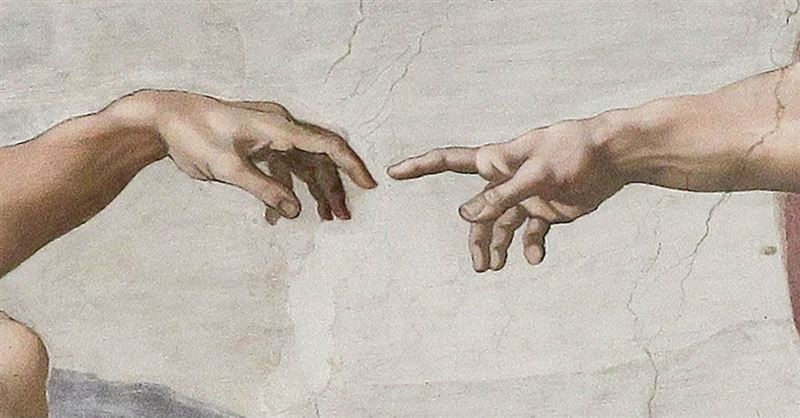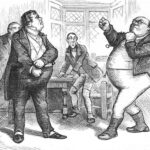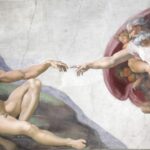
The Image of God and the Difference It Makes
This is a crucial and indispensable biblical teaching:
One of the core doctrines of biblical faith is that of our creation in the image and likeness of God. This is such a vital core belief and one that distinguishes our faith from most other religions. It has ramifications for why we are here, how we live, how we treat others, and how we relate to our Creator.
Paul Tripp’s very helpful recent book Do You Believe? (Crossway, 2021) examines 12 key biblical doctrines. I have already written articles looking at some of them, and this is now my fourth in this informal series. As with the other doctrines, Tripp offers two chapters on each: one doctrinal and one application.
Early on in the first of his two chapters on this key biblical doctrine, he says this:
“Like God” is an amazing thing to declare. “Made in his image” is a profound announcement. But these are the things God immediately declares upon creating Adam and Eve. In those words he is defining their identity and the utter uniqueness of their relationship to him. Adam and Eve are not just part of the catalog of creatures that God made. They are above, they are special, and they are christened with a dignity that separates them from everything else. We must not ever forget this foundational definition of who human beings are. With these words God names the intrinsic worth of people. This worth is never earned and cannot be taken away. To be human is to have dignity and worth because you carry the image of God himself. 230-231
He reminds us that none of this has to do with our choices, accomplishments, successes, or actions. We have overwhelming value simply because of the fact that we are made in God’s image. He spends time looking at the usual list of things this entails, such as being relational creatures and moral creatures.
But we are also worshipping creatures, and what he says about this is worth spending a bit of time on. The truth is, we were created to worship. We were born to worship. We are all religious beings because we all seek to worship. Writes Tripp:
In this way every human being is religious, because we all are made in God’s image and wired with Godward capacities, and we will either give ourselves in worship to God or we will worship something that God has made. Every human being is searching for God, though most don’t know it. Much of human disappointment, despondency, anger and hopelessness exist because we ask something to do for us what only God can do. Because we are spiritual beings, we name things as ‘god’ that are not God. Because we are worshippers, we will always hook our hopes and dreams to something. Wired with imaginations, we envision what life will be like, calculating if this “god” will come through for us….
Detached from God, our spirituality drives us into various forms of functional insanity. Careening from god to god and from disappointment to disappointment, we attach ourselves to yet another created thing and hope once again it will do for us what it can never do. We put godlike expectations on one another, and we break under the burden. We keep hoping creation will do what it simply has no capacity to do for us, and that it will offer what God alone can. 237-238
All of the abilities we have as humans – the ability to think, feel, communicate, etc – are orientated toward the worship of God. But sin destroys and distorts all this. Tripp continues:
Divorced from God, these capacities can go dark and become dangerous. Sadly, in our sin, we often use these abilities to manipulate, seduce, and oppress others. We use them to plan how we will disobey God and cover when we have. We use them to diminish others and to aggrandize ourselves. The misuse of these spiritual capacities is itself an argument for the necessity of the incarnation, the cross, and the resurrection of Jesus Christ. 238
In his application chapter Tripp looks at how this doctrine has very real practical implications for who we are and the way we live our lives. Consider the issue of identity. Wherever you look you find people struggling with this issue of identity – of who they really are.
He begins the chapter by looking at a number of examples of this, and then he says this about these individuals:
They searched for their worth horizontally. . . . They all had done the same thing. They looked for basic human worth, value, and dignity where it would never be found.
It is vital to understand that a stable sense of identity, and along with it basic human value and worth, can only ever be found vertically. You know who you are by looking first to creation and second to the cross. (I will discuss identity and the cross in a chapter to come.) So, parents, children, husbands and wives, students, business people, employees, neighbors, citizens, pastors, politicians, educators, and members of the body of Christ must have a robust theology of personhood. The foundation of a biblical theology of personhood is found in these words: “Let us make man in our image, after our likeness” (Gen. 1:26).
Forgetting the value and dignity imparted by these words will force us to look elsewhere, not only for an understanding of our identity, but for our sense of value and worth…. 247-248


Another important area where the doctrine of being made in God’s image comes into play is the matter of justice. As Tripp reminds us, “You cannot read the Bible without being confronted by God’s heart for justice. In fact, you could say that the biblical narrative is a justice story.” 250
He goes on to say this:
We are called to be ambassadors not only of God’s saving mercies but also of his wrong-righting, oppression-defeating justice. You cannot have grace without justice and you cannot have justice without grace; the redemptive narrative makes this very clear. Yet, many believers don’t seem to understand this. We might be committed to being representatives of God’s saving mercies, but we don’t seem to have the same enthusiasm to carry his heart for justice wherever injustice is found….
In God’s value system justice is a high-value issue. Working for justice for anyone who is experiencing injustice of any kind (racial, political, sexual, etc.) is a part of our calling. Scripture doesn’t call us to “just preach the gospel.” No, it calls us to tirelessly preach the gospel while we tirelessly work as God’s agents of mercy and justice. We cannot stand silent while any image-bearer is denigrated, oppressed, devalued, or living with regular injustices. Because every human being is an image bearer, every act of injustice is sin against the honor and authority of God. 253
He says that while full and final justice will only be restored when Christ returns, that does not mean we sit around and do nothing now. We can work with God now to be agents of justice. He concludes this section by offering a great quote from Spurgeon:
“The church that does not exist to reclaim heathenism, to fight to destroy error, to put down falsehood, a church that does not exist to take the side of the poor, to denounce injustice and to hold up righteousness, is a church that has no right to be. Not for yourself, O church, do you exist, any more than Christ existed for himself.”
As he closes this chapter he repeats the truth that Jesus is the sum and substance of all this:
Observing the image of God in its ultimate expression in the Messiah man, Jesus, should fill us with enthusiasm and hope. He is a living representation of what we will one day be, when the burden of sin has been fully lifted and the image of God is given full expression in us in every way and all of the time. Observing the perfect expression of the image of God in man in Jesus should also break our hearts. It should cause us to weep at the damage sin has done. You are confronted with it in yourself and all around you every day: when it comes to the image of God imprinted upon us, things are not the way they were meant to be.
So how do we get from the sadness of the present moment to the celebration of what will be? Again, Jesus is the answer. He comes not only as the ultimate image bearer but also as our substitute. In his perfect righteousness, Jesus measures up to God’s holy standard in ways we never could. In our place and on our behalf, Jesus perfectly meets the demands of God’s law, and because he does, is able to be the perfect Lamb of sacrifice. In his death, Jesus paid the penalty for our sins so we could be forgiven by the Father, adopted into his family, indwelt by his Spirit, and progressively transformed into the image of the Son. 262
Good news indeed. I again urge you to get a copy of this invaluable book and have a close and careful read for yourself.
[1538 words]




















May I commend you, Bill, on your stimulating review of Paul David Tripp’s book, Do You Believe?: 12 Historic Doctrines to Change Your Everyday Life (Wheaton, Illinois: Crossway, 2021).
It is one of your most important recent posts and deserves to be widely read.
Your piece reminds your readers of the incredible fact that we are made in the image of our Creator. If more people could grasp this truth, it would revolutionise the way humans behave and interact.
This got me thinking about how important it is to be able to distinguish counterfeits from the genuine article.
Four decades ago, the late evangelist Billy Graham’s wife Ruth told the story of a man who visited the counterfeit money department of Scotland Yard, the police HQ for Greater London. “It must take years and years of studying counterfeits,” he commented, “in order to know the real.”
“Quite the contrary,” came the reply. “It takes years and years of studying the real to make sure you can spot a counterfeit.” [Source: Ruth Graham, “Of forgeries and such”, Christianity Today, December 17, 1982.]
Christians should commit themselves to take the time to study the life and teachings of Jesus, who is nothing less than the authentic and (in Tripp’s words) “perfect expression of the image of God in man”.
This would equip them to be better able to spot counterfeit value systems and dehumanising ideologies that mislead so many, e.g., Marxism, postmodernism, critical race theory, wokism and radical libertarianism.
Thank for that John.